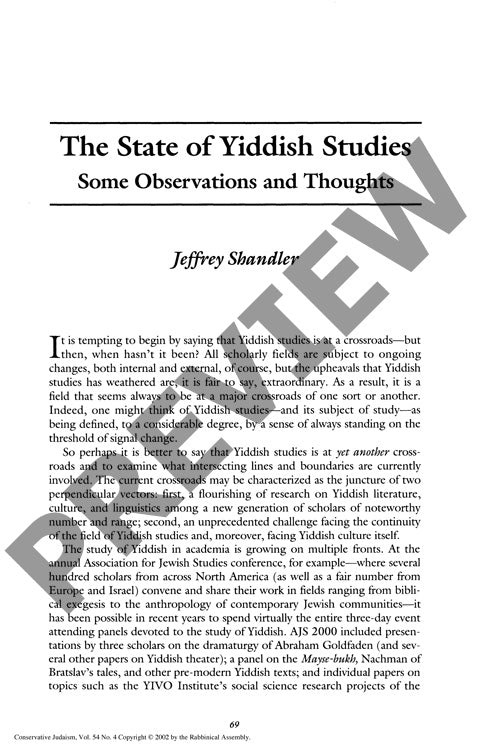The State of Yiddish Studies Some Observ
Couldn't load pickup availability
The field of Yiddish studies stands at a remarkable crossroads: while experiencing unprecedented scholarly growth, it faces the fundamental challenge of transitioning from the study of a living vernacular to what can be termed a "post-vernacular language." A surge of innovative research has emerged across North America, Israel, and post-Communist Eastern Europe, marked by fresh approaches to Yiddish theater, literature, and linguistics, alongside new cross-cultural comparative analyses. Analysis of nearly 200 dissertations from the UMI database, proceedings from the Association for Jewish Studies conferences, and emerging academic programs in newly accessible Eastern European archives reveals this scholarly renaissance. Yet as direct connections to pre-Holocaust native speakers diminish, the field must adapt its pedagogical and methodological approaches. The academy has become the primary site for cultural transmission, creating both opportunities and challenges. While this transformation signals the end of traditional vernacular-based Yiddish studies, it simultaneously heralds a new era of scholarly innovation within Jewish studies, one characterized by self-reflexive examinations of the field's intellectual history and creative approaches to cultural preservation.

More Information
-
Physical Description
-
Publication Information
Published 2002
ISBN
-
Publication Credits
Jeffrey Shandler

